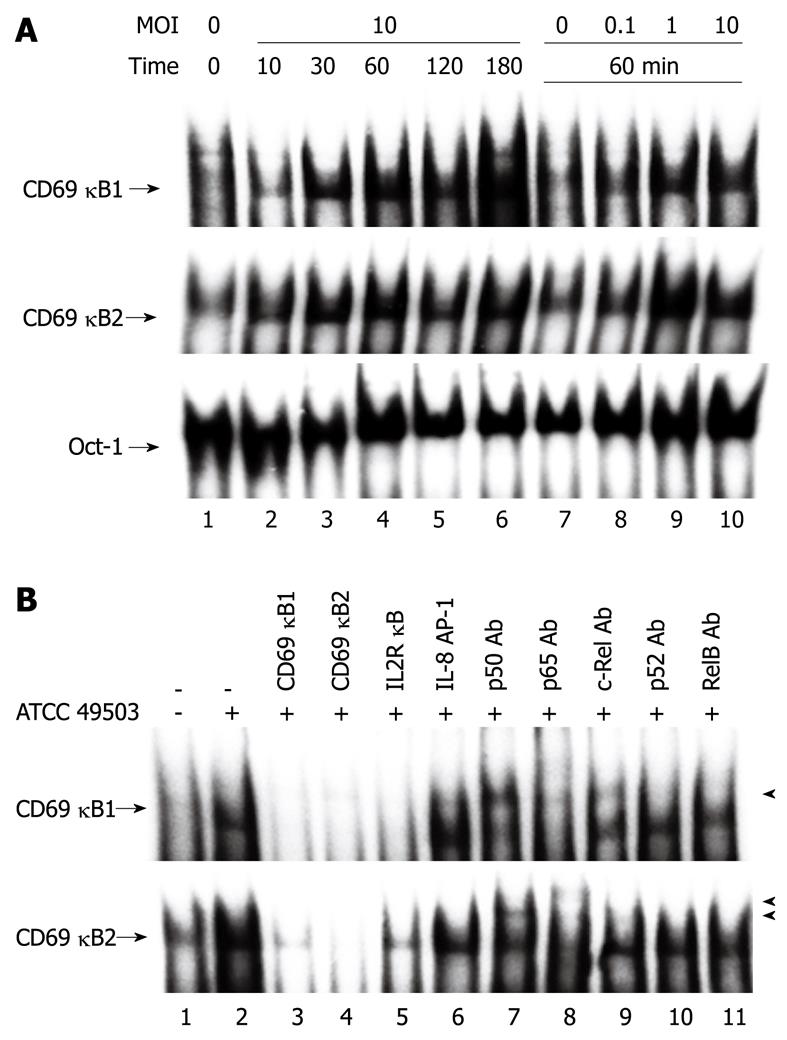Copyright
©2011 Baishideng Publishing Group Co.
World J Gastroenterol. Aug 28, 2011; 17(32): 3691-3699
Published online Aug 28, 2011. doi: 10.3748/wjg.v17.i32.3691
Published online Aug 28, 2011. doi: 10.3748/wjg.v17.i32.3691
Figure 4 Helicobacter pylori infection induces nuclear factor-κB binding activity.
A: Nuclear factor (NF)-κB activation in Jurkat cells infected with Helicobacter pylori (H. pylori), as evaluated by electrophoretic mobility shift assay (Oct-1). Nuclear extracts from Jurkat cells infected with different densities [the multiplicity of infection (MOI)] of H. pylori ATCC 49503 (lanes 7 to 10) for the indicated times (lanes 1 to 6) were mixed with oligonucleotide probes CD69 κB1 (top) and CD69 κB2 (middle), which contained the putative NF-κB motifs located at positions -160 and -223, respectively; B: Competition assays were performed with nuclear extracts from Jurkat cells infected with ATCC 49503 (MOI of 10) for 180 min. Where indicated, the excess amounts of each specific competitor oligonucleotide were added to the reaction mixture with each oligonucleotide probe (lanes 3 to 6). A supershift assay of NF-κB DNA binding complexes in the same nuclear extracts was also performed. Where indicated, appropriate antibodies (Ab) were added to the reaction mixture before the addition of probe CD69 κB1 (top) or CD69 κB2 (bottom). Arrows indicate the specific complexes, while arrowheads indicate the DNA binding complexes supershifted by the antibodies.
-
Citation: Mori N, Ishikawa C, Senba M. Induction of CD69 expression by
cag PAI-positiveHelicobacter pylori infection. World J Gastroenterol 2011; 17(32): 3691-3699 - URL: https://www.wjgnet.com/1007-9327/full/v17/i32/3691.htm
- DOI: https://dx.doi.org/10.3748/wjg.v17.i32.3691









